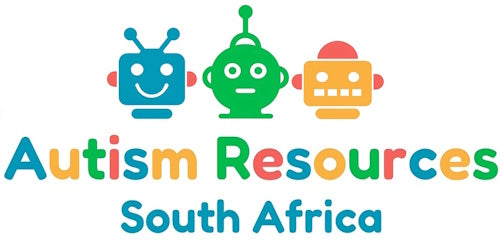What is Autistic burnout?
Jaco de GoedeWhat is autistic burnout?
Maybe you’ve heard the term autistic burnout and wondered what it is and how this term come about. We usually hear the term “burnout” used in professional life, which is characterized by exhaustion. The autistic community began applying the burnout term to all areas of life. Autistic adults have reported times when they could no longer cope, lost skills, had loss of function, started acting or feeling “more autistic” (increased repetitive behaviors or increased sensitivity to sensory input), lost employment, did poorly in school, experienced relationship problems, or had mental and/or physical health issues. Sometimes these experiences lead to permanent disability or suicidal behavior.
Autism researchers have only become aware of the burnout phenomenon in the past 5 years. It has been brought to researchers’ attention through discussions online and in person with autistic people.
Sarah Deweerdt, author of the article Autism Burnout Explained, describes autistic burnout as:
“the intense physical, mental or emotional exhaustion, often accompanied by a loss of skills, that some adults with autism experience. Many autistic people say it results mainly from the cumulative effect of having to navigate a world that is designed for neurotypical people. Burnout may especially affect autistic adults who have strong cognitive and language abilities and are working or going to school with neurotypical people.”
In a 2020 AASPIRE research study, it was defined as “a syndrome conceptualized as resulting from chronic life stress and a mismatch of expectations and abilities without adequate supports. It is characterized by pervasive, long-term (typically 3+ months) exhaustion, loss of function, and reduced tolerance to stimulus.”
What causes autistic burnout?
Autistic burnout occurs when the challenges of life exceeds a person’s resources. Some examples are:
- A life transition – a move, entering high school, starting college, aging.
- Masking or camouflaging – this is when autistic people mimic neurotypical behavior by using scripts for small talk, force themselves to make eye contact or suppress repetitive behaviors.
- Sensory overstimulation – an example of this would be constantly coping with excessive noise.
- Executive function demands – having to juggle too many demands at once. I often see this with university students.
- Stress – ex. changes or upheaval in a person’s life, job loss, relationship break-up
- Sleep deprivation, poor nutrition, dehydration
- Aging – feeling less energetic, needing more downtime
What are the signs of autistic burnout?
- Lack of motivation
- Loss of executive function skills (disorganized, trouble making decisions)
- Difficulty with self-care (showering, personal hygiene)
- Easier to reach overload or meltdown
- Loss of speech/selective mutism
- Feeling exhausted or lethargic
- Physical illness, digestive issues
- Memory loss
- Can’t mask anymore or loss of social skills
- May experience high energy before collapse
- Seeming more autistic such as an increase in repetitive behaviors
What can an autistic person do to help themselves if they are experiencing autistic burnout?
- Take time off and rest/relax in order to recover.
- Set aside time to engage in activities or interests that re-energize you.
- Allow time for not having to mask and suppress stims.
- Reduce expectations and demands. Let people know what they are asking for is too overwhelming right now.
- Limit social interactions.
- Exercise – a little bit of movement can help reduce anxiety and contribute to an overall sense of well-being.
What can family and friends do?
- Reduce expectations; however, this does not mean reducing expectations about a person’s ability to achieve their goals in life.
- Accept a person for who they are, autistic traits and all, and don’t ask them to change or mask.
- Give emotional support. Listen to what is bothering them.
- Provide direct support for daily living activities. Help with laundry, cooking, grocery shopping etc.
- Allow for accommodations at work, school and in the community.
- Focus on autistic strengths and preservations to reduce the risk of burnout. In other words, find employment in an area of interest, take courses on interesting topics.
- Understand that decreases in function may be a sign of autistic burnout, not laziness or lack of motivation.
Note – many adults report their first autistic burnout around transition age which is a time of great change. Moving into adulthood is a vulnerable time due to an increase in expectations, number and scope of life-changes, and the general stress of this developmental period. A young person may not understand what is happening to them if this is their first time experiencing autistic burnout.
First Person Accounts of Autistic Burnout
Ronnie Pinder (a self-advocate, consultant, trainer and mentor). Autistic fatigue
Undercover Autie (Emma). Autistic fatigue and exhaustion (2019)
Cherry Blossom Tree (Kate). Autistic burnout and regression (2017)
The Autistic Advocate (Kieran). An autistic burnout (2018)
Ryan Boren. Autistic burnout: the cost of masking and passing (2017)
Patrick Dwyer. Burnout and expectations (2019)
Amythest Schaber. Ask an autistic #3 – What is autistic burnout? (2014)
Judy Endow – Autistic Burnout and Aging (2017)
Podcasts
The thrive with Aspergers podcast - 5 autistic burnout recovery tips you need to learn now (2018)
CS Wyatt - Autistic burnout (2018)
Karlett A - Audio blog My autistic burnout and recovery (2018)
Articles
Kate McNulty, Autistic Therapist – Antidotes to Autistic Burnout (2021)
Alex Parker – Tips for Autistic People to Help Recover from Burnout (2018)
For more informative posts, read more on the Autism Awareness Centre News page
